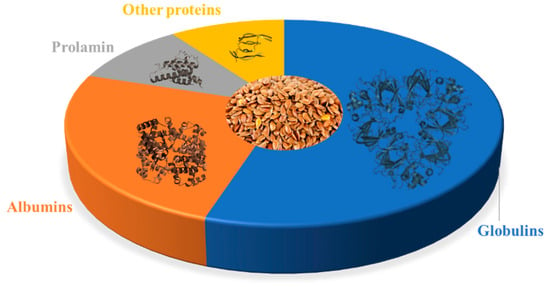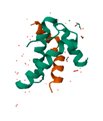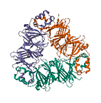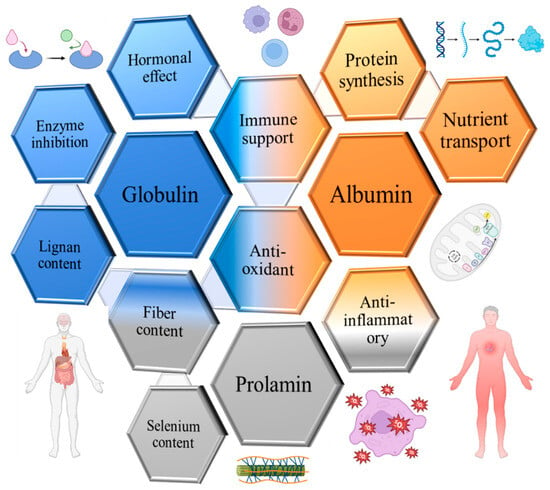Flaxseed has been recognized as a valuable source of nutrients and bioactive compounds, including proteins that possess various health benefits. In recent years, studies have shown that flaxseed proteins, including albumins, globulins, glutelin, and prolamins, possess anti-cancer properties. These properties are attributed to their ability to inhibit cancer cell proliferation, induce apoptosis, and interfere with cancer cell signaling pathways, ultimately leading to the inhibition of metastasis.
- flaxseed proteins
- cancer treatment
- radiotherapy
- mechanobiology
- proteoform level analysis
- metastasis
- : metastasis
- flaxseed proteins
1. Flaxseed Proteins

| Proteome Component |
Structure | Percentage of Total Protein | Potential Health Benefits |
|---|---|---|---|
| 11S Globulin |  |
43–48% | Contains anti-cancer peptides [19][20][21][40,41,42]; may have anti-inflammatory and antioxidant effects [22][23][43,44] |
| 2S Albumin |  |
16–18% | Contains peptides with potential anti-cancer and anti-inflammatory effects [21][24][25][42,45,46]; may have cholesterol-lowering effects [26][47] |
| 7S Vicilin-Like Globulin |  |
11–13% | May have antioxidant and anti-inflammatory effects [23][27][44,48]; contains peptides with potential anti-cancer effects [28][49] |
| Prolamin |  |
4–6% | Contains peptides with potential anti-cancer effects [29][30][50,51] |
| Glutelin-Like Protein |  |
2–3% | May have antioxidant and anti-inflammatory effects [31][32][52,53] |
| Other Proteins |  |
10–15% | May include lignans, which have antioxidant and anti-inflammatory and thus potential anti-cancer effects [33][34][54,55] |
2. Albumins of Flaxseed
| Action | Mode of Action | Evidence |
|---|---|---|
| Inhibits cancer proliferation and induce apoptosis | Interaction with the αvβ3 integrin via the FAK/ERK/NF-κB signaling pathway; activation of caspase-3 and cleavage of PARP [52][53][73,74] | Inhibited the proliferation and the tumorsphere-forming capacity of colon cancer HCT-116 cells [54][75]. Increased the amount of colon cancer cells KM12L4 undergoing apoptosis twofold [55][76]. Reduced tumor growth in NSCLC and melanoma xenografts [51][72]. |
| Inhibits cancer cell invasion and migration | Interaction with cellular receptors (integrins and EGFR); disrupts the activity of key signaling proteins (MMP-2/-9) via the FAK/Akt/ERK and NF-κB signaling pathways [56][77] | Caused a reduction in the migration (scratch assay) of HCT-116 and KM12L4 colon cancer cells [53][74]. Inhibited the migration and invasion activity in MDA-MB-231 and MCF-7 breast cancer cell lines [56][77]. Inhibited the invasion of melanoma A375 and B16-F10 cells to matrigel [50][71]. |
| Reduces inflammation and oxidation | Reduction in the production of certain inflammatory markers (ROS, TNF-α and IL-6) [57][58][78,79] | Mouse macrophage cells (LPS-stimulated RAW 264.7) reduced the production of certain inflammatory markers (ROS, TNF-α and IL-6) [59][80]. |
| Reduces cancer cells colonization | Reduction in phosphorylation of the intracellular kinases FAK and AKT; reduction in histone acetylation of lysine residues in H3 and H4 histones [50][71] | Reduced pulmonary colonization after injection of highly metastatic B16-F10 . |
| Arrest cell cycle | Arrests the cell cycle at the G2/M and G1/S phase; altered the expression of the G1 specific cyclin-dependent kinase complex components, increased levels of p27Kip1, reduced levels of phosphorylated Akt [55][60][76,81] | Inhibited cell cycle progression at the G1/S phase for NSCLC H661 cells [60][81]. Lunasin treatment of MDA-MB-231 breast cancer cells resulted in a notable increase in RB1 level, which lead to arrest of G1 phase [61][82] |
3. Globulins of Flaxseed
| Action | Mode of Action | Evidence | |
|---|---|---|---|
| Inhibits cancer cell growth and proliferation | Lectin was responsible for the antiproliferative activity of the MPI-h [74][95]. Acid fraction of glycinin, composed of low molecular weight peptides, was able to inhibit cancer cells growth [75][96]. | Inhibited the proliferation of UMR106 rat osteosarcoma-derived cells [74][95] and inhibited the growth of cervical cancer HeLa cells in a dose-dependent manner [75][96]. | |
| Antioxidant effect | Small (~1 kDa) peptides generated from 11S globulin inhibit the formation of hydroxyl radicals by reaction of H2O2 and Co+2 and decreasing ROS [20][41] | Demonstrated peroxyl radical scavenging activity dependent on the structure of peptides in human adenocarcinoma cell line, Caco-2 TC7 [20][41] | |
| Induces cancer cell death (apoptosis) | Increased the expression levels of apoptosis-related spot-like protein (ASC), caspase-1, the cleaved gasdermin D, and interleukin-1β [76][97]. Flaxseed orbitides influence mitochondrial- and death receptor-mediated intrinsic and extrinsic pathways [77][98]. | Glutelin extracts induced the apoptosis of cervical cancer HeLa cells [78][99]. Human gastric SGC-7901 cell apoptosis was induced by linusorb B3 flaxseed orbitides [77][98] | |
| Arresting cell cycle | Linoorbitides arrested the cell at the G1 phase by downregulation of CDK2/4 and overexpression of p21WAF1/CIP1 and p27KIP1 genes [79][100]. | melanoma cells [50][51][71,72]. Inhibited formation of liver metastasis in murine model | Cyclolinopeptides/linusorbs are capable of arresting cell cycle, and thus reduce metastasis spreading in human gastric SGC-7901 cells [79][53][74][100]. |
| Cytotoxic effect on cancer cells | Linoorbitides have strong cytotoxic effect probably due to its binding abilities to human serum albumin [11][32]. | Linusorb B3 is cytotoxic to human melanoma cells A375 and breast cancer cells Sk-Br-3 and MCF7 at high concentration [80][101]. |
4. The Combined Anti-Cancer Action of Flaxseed Proteins

5. Flaxseed Proteome Effect on Anti-Cancer Radiotherapy
6. Conclusions
Nutrition plays a crucial role in the overall well-being of cancer patients and can significantly contribute to reducing complications during treatment [168,169]. In recent years, there has been a growing focus on plant-based nutrition as a means to protect against a range of leading causes of death, including various types of cancer such as breast, prostate, colorectal, and gastrointestinal cancers. Plant-based diets comprising whole foods have demonstrated substantial protective effects against these cancers and other chronic diseases. These diets can serve as disease-modifying agents, enhancing the management and treatment of these conditions. Consequently, interventions involving nutrition in the prevention of diverse cancers offer a notable complement to existing medical therapies.
Addressing the current gaps in knowledge about flaxseed proteins is crucial for advancing both cancer treatment and overall health. Firstly, the limited representation of flaxseed proteins in existing databases underscores the need for a more comprehensive inclusion of this vital information. Additionally, the absence of established sequences for flaxseed proteins poses a challenge in understanding their biological activities. Furthermore, the scarcity of research on the properties of flaxseed for cancer treatment emphasizes the importance of exploring these avenues. The development of a compatible nutraceutical enriched with flaxseed proteins and the analysis of its anti-metastatic effects contribute significantly to promoting healthy aging. These initiatives not only address existing gaps but also pave the way for novel strategies that can enhance both cancer treatment and overall well-being.
